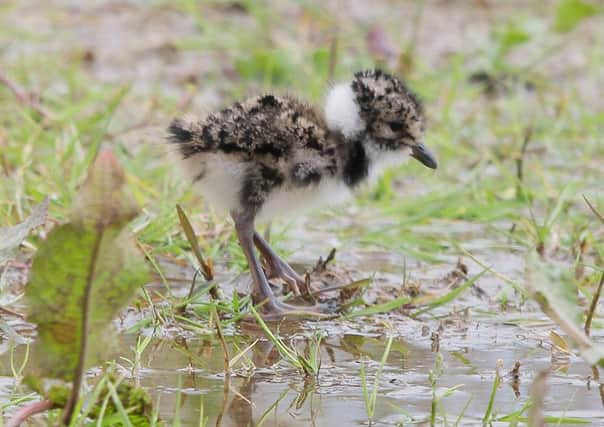COLUMN: The lives of our chicks


Last time in my column, I wrote about eggs. Maybe no surprise therefore that I’m devoting this month to chicks.
Birds have some very different strategies for raising chicks, depending on which species they are. Some have chicks that can run about and find their own food almost immediately. Covered in soft downy feathers, they are quite mobile and do look like little birds. Ducks are good examples of this. As soon as the final egg has hatched, the mother duck leads her brood off to find somewhere safe to paddle about. Wading birds do this too, though their chicks are even more precocious, and often spend quite a bit of time away from the parent, returning only for shelter from bad weather.
Advertisement
Hide AdAdvertisement
Hide AdTo get chicks this advanced does take quite a long incubation, so other birds have a different tactic. Their eggs hatch sooner, but the chicks can’t look after themselves. Missing any feathers, they are quite helpless, and need their parents to keep them warm and bring them food. Only after a couple of weeks are they finally able to leave the nest, and even then they often still depend on their parents to bring them food. Blue tits, safe in their nestboxes are a good example of this method.
Then, of course, there is the joker in the pack. The cuckoo. Their chicks are born in the helpless state, but rather than do all that time consuming parental bit, cuckoos offload their offspring onto surrogate parents. Finding the nest of a suitable bird (reed warblers are often a favourite) they remove one egg and lay one of their own. Their chick hatches and pushes the other eggs or chicks out, then claims all the attention of its foster parents. Oddly, despite the dramatic size difference between the warblers and the cuckoo, they never seem to catch on. Instead the scurry about, feeding the ever hungry changeling as it grows to monstrous size, bigger than them!
I’d just like to finish with a heartfelt plea. Please, if you see a baby bird, do NOT pick it up. Every year we get lots of calls from well-meaning but misguided people who have found an ‘abandoned’ chick and have carried it off. Most of these were not abandoned at all, their parents were watching from a safe distance. When they leave the nest many birds can’t yet fly, but instead hide away in undergrowth and wait for the parents to return with food. Unless they are in immediate danger, say from a cat, it is far better to leave them be. More information about what to do can be found on the RSPB website.